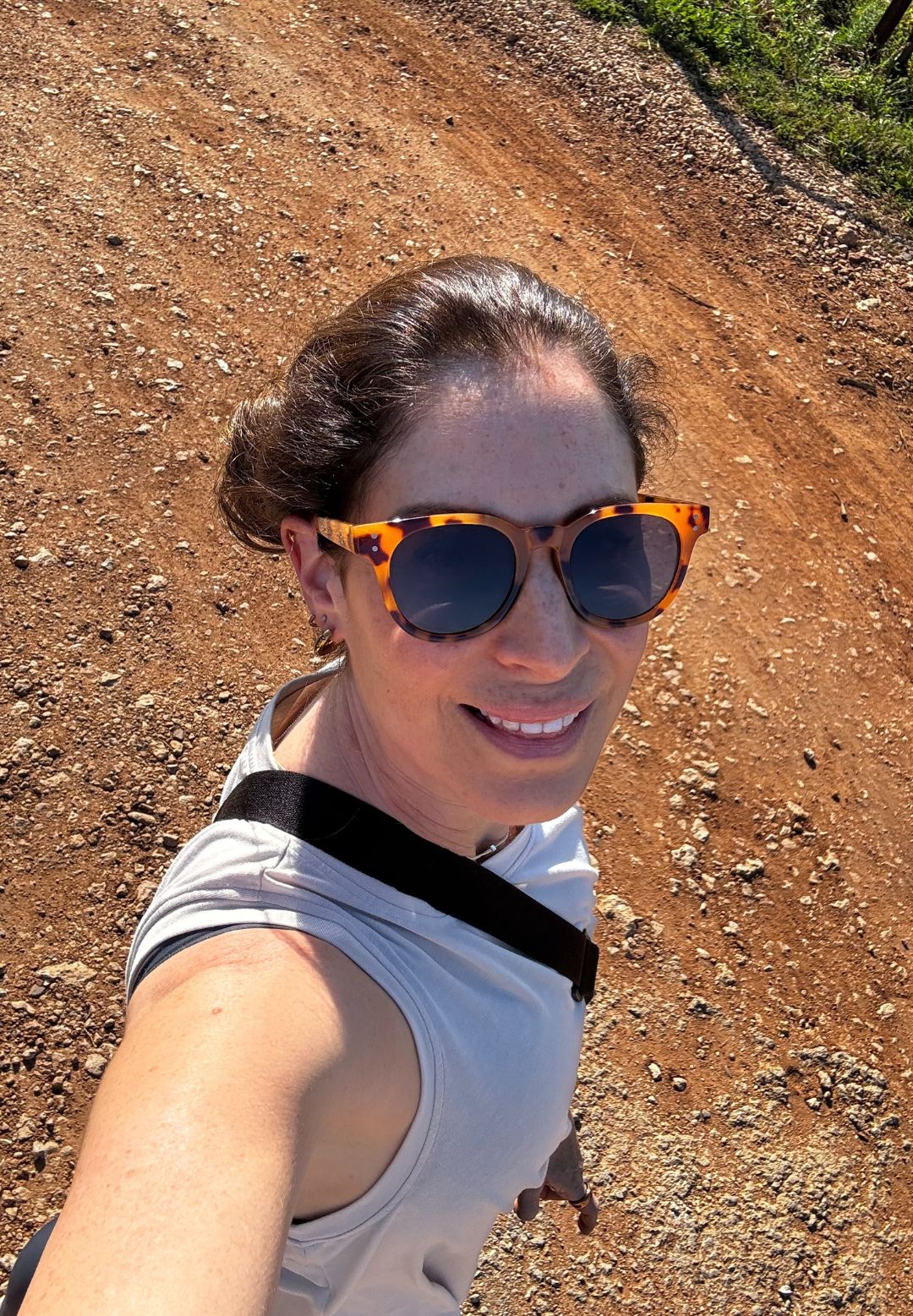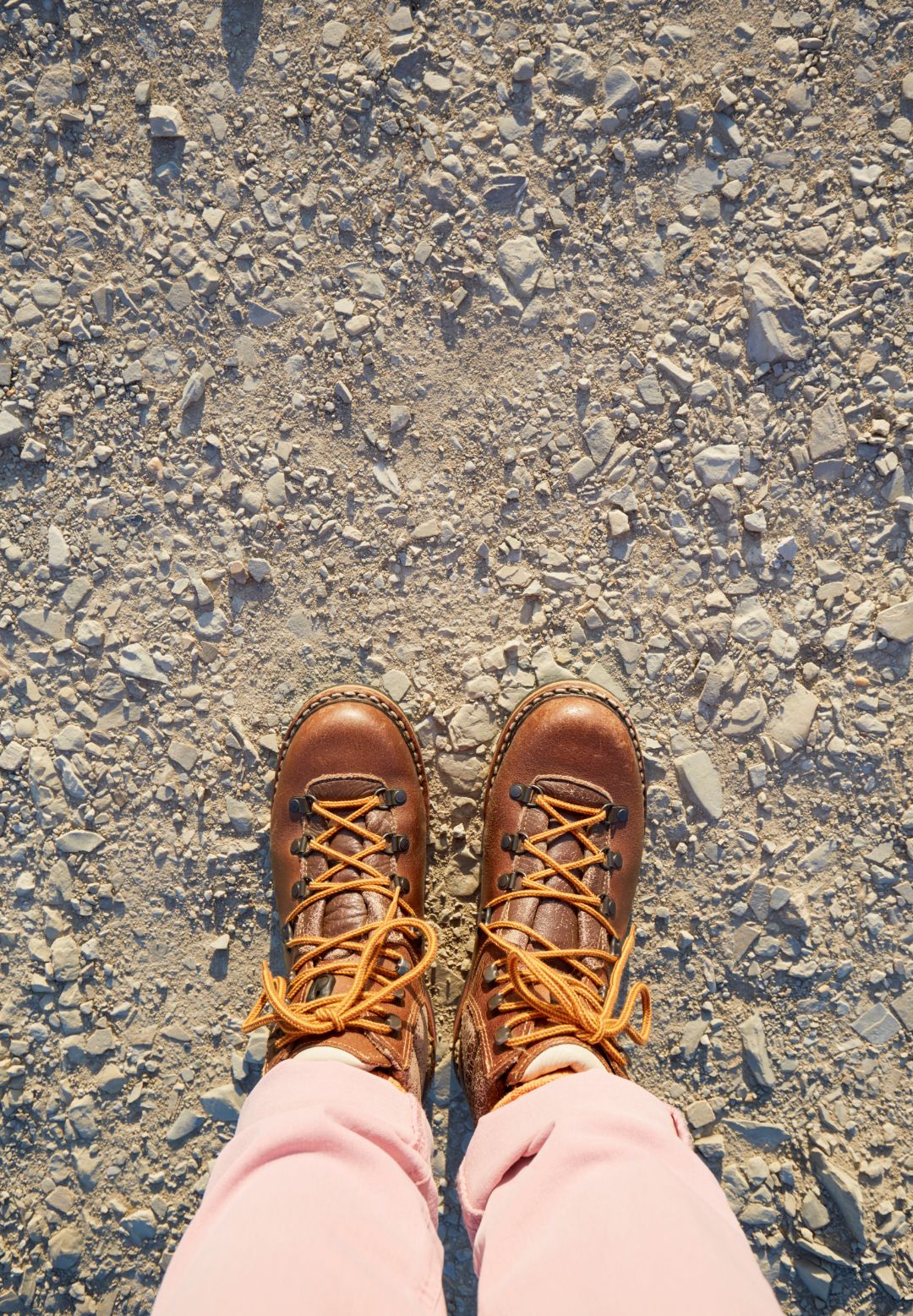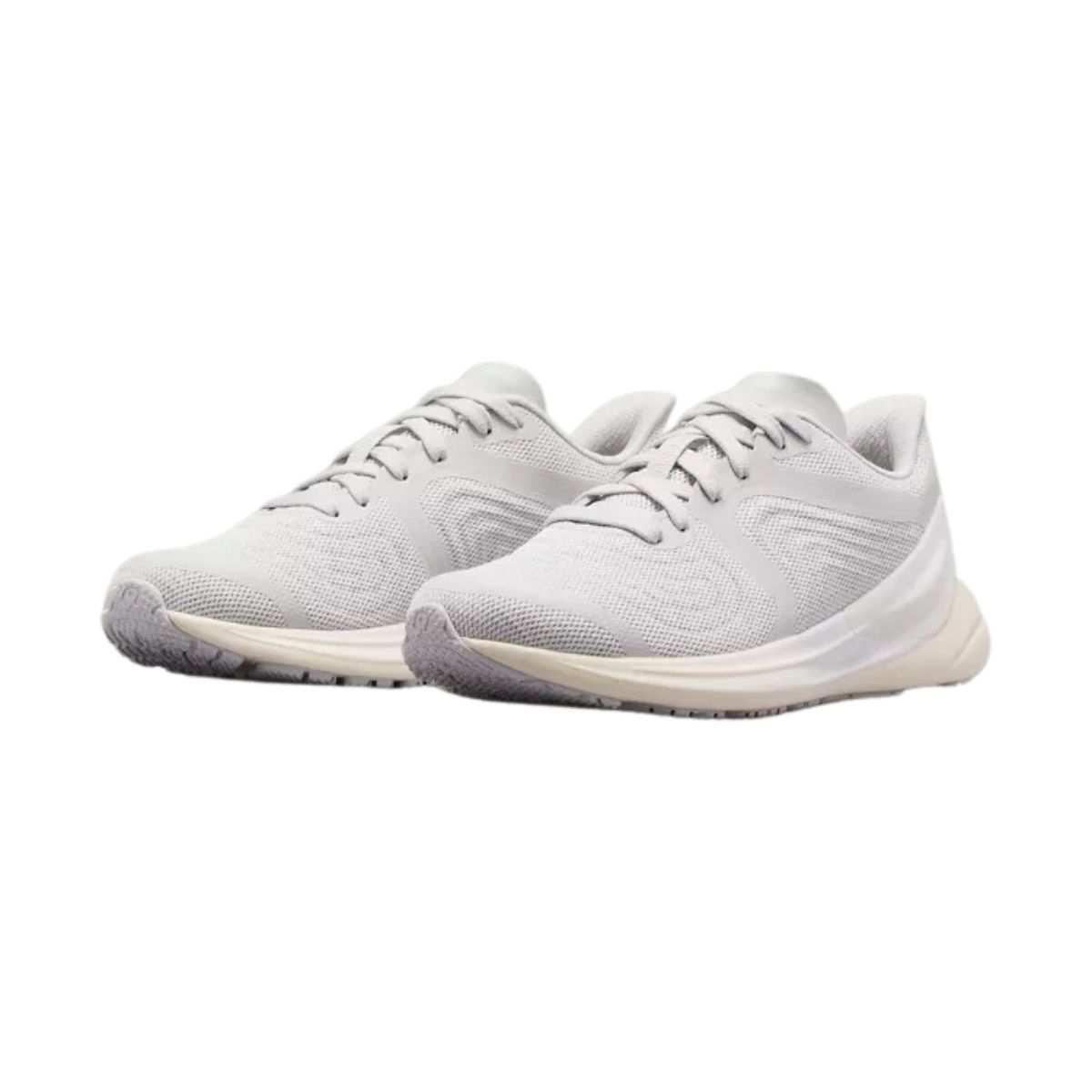I tried TikTok's viral silent walking trend every day for a week to quiet my racing mind - and I'm amazed how calm I feel
Zero distractions, maximum zen.


When was the last time you went for a walk without your phone, a friend, or any other distractions? If you're anything like me, you might be hard pressed to remember, so when I was asked to try out the viral silent walking trend, it's safe to say my interest was piqued.
While I do walk most days (I have a small dog, so that helps get me out of the door), it's definitely more functional than relaxing, although often I'll find that I'm more chilled on my return. And it's no coincidence, either: there are mountains of research proving that the humble stroll is beneficial for both mental and physical health and wellbeing. Notably, studies (such as this one, published in the journal Geroscience) show regular walking reduces our risk of developing cardiovascular and cerebrovascular diseases, type 2 diabetes and dementia, as well as improving sleep, longevity and mental wellbeing.
Why silent walking, you may ask. Well, the trend combines two powerful wellbeing tools in one simple, free and accessible habit: exercise and mindfulness. And it's certainly capturing the zeitgeist (the hashtag #silentwalk garnering almost 600k views on TikTok alone) as we increasingly look for ways to still our racing minds and reset our frazzled nervous systems.
"With rising burnout, overstimulation, and screen fatigue, many people are craving low-pressure ways to regulate their nervous systems," says holistic empowerment coach Jo Irving. "They're wanting to reconnect with themselves without needing a yoga mat, app, or an hour of free time. In a world constantly asking for our attention, silent walking invites us to give that attention back to ourselves."
But while it's enjoying a moment, silent walking isn't anything new. "Silent walking is trending on platforms like TikTok and Instagram, often described as a dopamine detox or meditative walk," explains Irving, "but it is rooted in ancient mindfulness practices. It is a way to reclaim the everyday walk as a space for presence and peace."
It sounds like a trend I can totally get on board with. Keep scrolling to find out how I get on, but while you're here, see how other MC UK staffers fared when we tried Nordic walking every day for a week, the 6-6-6 walking challenge, walking every day for two weeks and the best walking workouts for beginners, here.
I tried TikTok's viral silent walking trend every day for seven days - and have been pleasantly surprised.
What is the silent walking trend?
As you'll probably have gleaned by now, silent walking is exactly what it says on the tin: walking in silence. But there's a little more to it than that, as you'll have to leave your devices behind, too (gulp.)
Celebrity news, beauty, fashion advice, and fascinating features, delivered straight to your inbox!
"Silent walking is a trend that’s been gaining traction lately, and I can see why it’s resonating with so many people," personal trainer Eryn Barber tells MC UK. "At its core, it’s simply about going for a walk without distractions – no music, no podcasts, no scrolling on your phone. The idea is to be fully present with your surroundings and your thoughts, which can be a bit of a reset in today’s constantly connected world. It’s a refreshing switch from the overstimulation we’re used to."
How does a silent walk work?
We've touched on how a silent walk blends both working out in nature and mindfulness above, and this is absolutely the trend's USP.
"Essentially, the silent walking trend is a mindfulness exercise, as we are focusing on the present moment and tuning into our senses," notes personal trainer and founder of MADE Wellness, Penny Weston. "Time in silence can help us to think more clearly, and calm our minds when it is racing with thoughts."
To avoid the temptation of distractions (buzzing phones, or even a phone call), you're gently advised to leave all devices behind (yes, including your AirPods) and fully surrender to tuning into your surroundings.
What are the benefits of trying a silent walk?
Having done the research before starting my week of silent walking, I can confirm that there really is a myriad of benefits associated with the trend. On top of the usual pros of taking a daily stroll, silent walking offers its own unique benefits, too.
1. It calms the nervous system
"From a mindfulness point of view, silent walking allows us to practice awareness in motion," notes Irving. "You begin to notice your breath, the sound of your footsteps, the rhythm of your thoughts. You are no longer numbing out with noise, instead, you're tuning in. This activates the parasympathetic nervous system, your rest and reset state, and brings you into the present moment where healing and clarity naturally occur."
2. It improves focus and creativity
Struggling with writer's block? Try a silent walk to get those creative juices flowing.
"By removing digital noise, silent walking encourages a natural state of mindfulness and creativity," says Dr Sejni Pattani, portfolio GP and lifestyle medicine physician. "It allows emotional regulation, reduces stress hormones like cortisol, and improves focus."
3. It boosts mental wellbeing
"From a medical standpoint, practices like silent walking can reduce stress, lower blood pressure, support better sleep, and help regulate mood," notes Dr Pattani. "This is especially useful for those struggling with anxiety or burnout."
4. It promotes physical wellbeing
It's well established that while low-impact, walking as a form of exercise is certainly not low-reward.
"‘Regular exercise is the key to staying both physically and mentally fit, healthy and happy," advises Weston. "When we exercise, the body releases chemicals such as endorphins, serotonin and dopamine which boost our sense of well-being and suppress hormones that cause anxiety. When released, endorphins can help relieve pain, reduce stress and may cause a euphoric feeling."
5. It's accessible
"Gentle walking improves circulation, joint mobility, and cardiovascular health, while also being low-impact and suitable for nearly all fitness levels," agrees Dr Pattani.
6. It helps us sleep better
We know that exposure to daylight helps to regulate our circadian rhythm, which is responsible for controlling when we feel tired or wide awake. A daily silent walk is a great way to help this process along.
"I often recommend a short walk daily, particularly outdoors in green spaces, where exposure to nature and light can amplify all the physical and mental benefits of exercise and help regulate the sleep cycle," says Dr Pattani. "It’s a simple prescription, but one that often leads to profound results in patients’ overall wellbeing."
I tried the viral silent walking trend for a week, here's why I rate it
Days one to three
Day one of my trial arrives, and while I'm excited to get started, I'm also slightly apprehensive, as historically I'm not great at mindfulness, struggling to switch off. But the experts reassure me that you really don't have to be a meditation whizz to benefit from the practice, so I set off intrigued to find out how I'll feel.
I choose a meandering path through the woods near my house (a place I'm always thankful to have on my doorstep), as Irving suggests picking a safe and quiet route. I'm fortunate to live in a fairly rural town, so any distant traffic noise is easy to block out, and I barely see another soul in the 45 minutes I'm out - bliss.
I'm pleasantly surprised that my first foray proves just as relaxing as I'd hoped. I even manage to do some mindful breathing, to really up the ante on those benefits, something I always mean to do but am too busy to remember. I'm actually reluctant to return home, which has to be a good sign.
They say pride comes before a fall, though, and strangely, I find day two slightly more challenging. My mind keeps wandering to the thousand and one jobs on my to-do list, and even though I know I've left it at home, my hand keeps reaching for my phone, only for my brain to catch up and reprimand it. According to the experts, though, this is really normal, and they encourage me to be kind to myself.
"Be prepared for the silence to feel a bit awkward at first – that’s completely normal," reassures Irving. "Give it a few tries, and it often becomes something you really look forward to."
With a renewed mindset, I set out on day three with my expectations low, and when my mind begins to wander, I try to gently bring it back to the present - and I'm definitely getting better at doing so. A mindfulness win.

Health writer Anna during her silent walking challenge
Days four to seven
By day four, I feel like I'm properly in the swing of the challenge, and Irving is right - I do look forward to my daily walk. While it definitely feels odd to be leaving the house sans screen, I soon get used to not having my phone, and in fact begin to forget to grab it when I do return home. In essence, the week has served as a bit of a mini-reset on my social media habit, something that can only be a good thing.
Days five and six are much the same: any initial reluctance to make time in my day to walk quickly dissipates when I consider how calm I feel when I return, and my writing feels like it flows better than normal, too — the creativity boost is real.
Day seven coincides with travelling, and I'm exhausted as I blearily head out to explore the (admittedly stunning) hotel grounds when I reach my destination. But even on very little sleep, I feel energised rather than drained by my stroll, returning to my room less frazzled, and having left the stress of airline travel well and truly behind. In fact, it's the perfect post-flight activity — I'm way too tired for a high-impact workout, but it feels great to have woven some movement into my day, rather than crashing in my room.
Will I keep it up? Honestly, of all the trends I've tried (and there have been many!), this is one of my favourites. It's easy, doesn't have to take long (just 15 minutes was plenty, on busy days), and it really taps into what my body and mind need (a way to destress, fast). It's a yes from me.

Some walking boots and a hiking trail
Shop MC UK's go-to walking essentials now:
How do I get started with silent walking?
"One of the great things about silent walking is you don't need anything fancy to get started," advises Irving. "There is always time for it, too. Whether you are walking the dog around the block, heading to work, or simply stepping outside into your garden, it all counts. Every moment of presence supports your mind and your nervous system - even five to ten minutes a day can create a shift in how you feel."
Here's how to do it, according to the expert.
1. Leave the phone behind or put it on aeroplane mode. No headphones.
2. Head outside. Nature is ideal, but it is not essential.
3. Walk slowly and with intention. No rushing or multitasking.
4. Notice the sounds, smells, textures, and thoughts that arise.
5. Let thoughts come and go without judgment. Just observe.

Anna Bartter is a freelance journalist who writes about health, fitness and women's lifestyle for publications including Stylist, Metro and Psychologies, among others.
She's always on a quest to find a variety of fun and functional workouts that give you the most bang for your workout buck and she's passionate about championing movement for everyone's mental and physical wellbeing.


